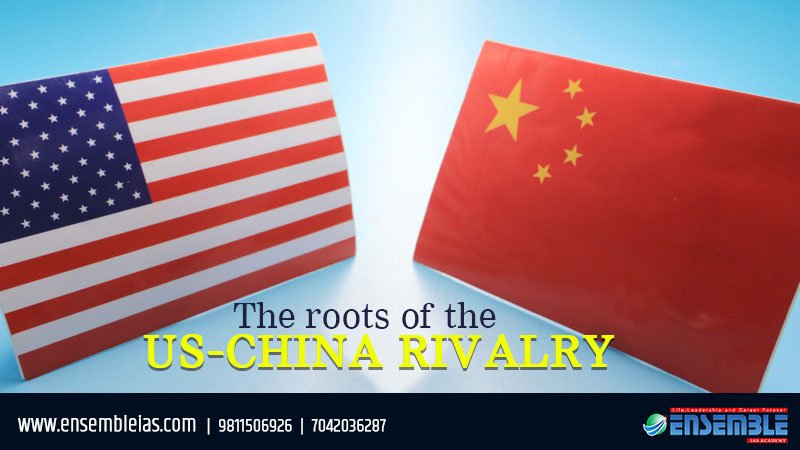The theatres of conflict include trade, geopolitics, technology, climate, and political values
US-China rivalry
The global economy has grown over the last decade at 3.2% per annum to $86 trillion in nominal terms. What has been markedly different in the last 10 years has been the dominant contribution of China to global growth. China’s contribution to global growth at 37.6% has, in fact, exceeded the contribution of the United States (US) at 30%. The size of the Chinese economy at $14 trillion is today 66% the size of the US economy. It is worth recounting that in 2000, Chinese GDP at $ 1.2 trillion was just 10% of US GDP. The full impact of the rise of China has begun to deeply influence not just the global economy and trade but also geopolitics, technology standards, sustainability and climate change, and the shift in consumption away from developed markets.
View our Blog: https://ensembleias.com/blog/
The immediate positive development is the emergence of new consumption demand by the four billion new emerging markets consumers, many of whom are in China but also in India and Southeast Asia. By 2025, $30 trillion of demand will come from the consumers of emerging markets. These consumers have a middle-class mindset with high aspirations, and demand global quality in line with their newfound increase in wealth. However, their per capita income is lower than that of their counterparts in the West, and so companies need to re-craft their business models to be able to serve them effectively at a lower price point.
In other ways, China’s rise comes with its challenges. Back in 450 BC, when the Greek historian Thucydides wrote that “it was the rise of Athens and the fear that this instilled in Sparta that made war inevitable”, he could have been writing about China and the US today. Dominant countries are always insecure about another rising power that could challenge them. The fast growth of China in the first decade of the 21 century was welcome, as it provided cheaper manufacturing locations and efficiently integrated global supply chains. The last decade has changed all that. Its continued dramatic rise has made it an economic giant. Its massive investments in technology and the manner in which it extracted intellectual property from foreign companies has made other countries resentful. Whatever the misgivings, China today is like a superpower in economic, military, nuclear, and most importantly, in its technological strength.
Visit our store at http://online.ensemble.net.in
With Donald Trump’s presidency, the underlying hostility in the US has been given expression. There is direct conflict in trade, contested geopolitical spheres of influence, and in deciding the underlying standards in modern technology. Trump has forcefully taken on the adverse terms of trade by imposing tariffs on China, and, more broadly, heralded a new nationalism with his America First policy. China, on its part, has always objected to its insignificance in the post-World War II institutional structure. To correct this, China has created new institutions that it can dominate — Asia Infrastructure & Investment Bank and New Development Bank — to challenge the US and European control of the International Monetary Fund and the World Bank. It has also asserted its newfound status in developing a more muscular foreign policy, with its best expression being the Belt and Road initiative. It is working hard to create its own sphere of influence.
Source: Hindustan Times
For more details : Ensemble IAS Academy Call Us : +91 98115 06926, +91 7042036287
Email: ensembleias@gmail.com Visit us:- https://ensembleias.com/
#US_China #GDP #conflict #trillion #trade #geopolitics #technology #climate #political_values #rivalry #blog #current_affairs #daily_updates #free #editorial #geographyoptional #upsc2020 #ias #k_siddharthasir #ensembleiasacademy




